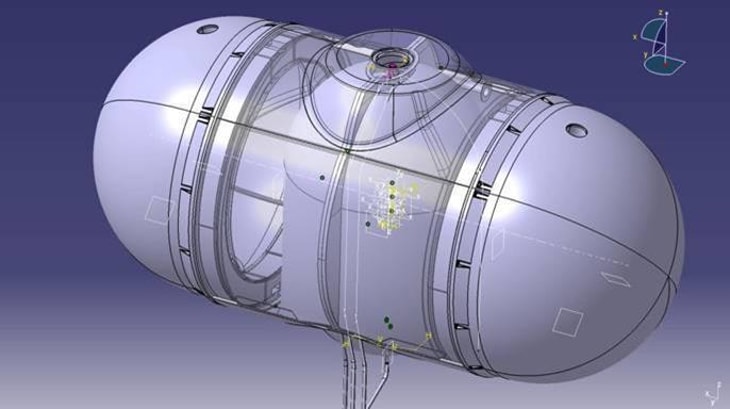The offshore oil and gas industry is involved in a continuing quest to locate and develop new subsea hydrocarbon deposits in evermore hostile regions and at increasingly deep locations, inevitably pushing the boundaries of technology. As part of a £2.6million ($4.2 million) project, Deep Sea Recovery Limited (DSR) has developed and tested a cryogenic buoyancy system capable of lifting and lowering subsea loads of less than one ton and up to several thousand tons.
Current technology for the installation and retrieval of subsea equipment is the time-honored crane and cable. Present infrastructure demands involve the installation of multiple subsea structures, often weighing in excess of one thousand tons and demanding the charter of Heavy Lift Vessels (HLVs), very large ships with a high capacity crane mounted on its superstructure. There are a finite number of these vessels worldwide and HLVs must typically be chartered some years in advance, with vessel size and scarcity inevitably being reflected in charter day rates which can exceed $500k per day.
DSR has taken a radical approach to the problem of installing and removing subsea structures by developing a patented cryogenic buoyancy system. Two principle types of buoyancy system are being developed from the core platform technology. The first, Remote Operated Buoyancy (ROB), is a type of robotic forklift system incorporating thrusters and hence capable of maneuvering horizontally as well as vertically. ROB also incorporates both an articulated grab that enables it to carry a load, and an interlock mechanism that permits two or more ROB units to link together and thereby increase load capacity. A single ROB has a typical lift capability of 10 tons. Tasks undertaken include ferrying loads between surface and seabed, clearing debris from a debris field, installing and removing pipes, and more.
DSR’s second type of buoyancy system is a larger, modular system aimed at the installation and removal of heavier loads. One or more modular buoyancy units will be attached to a given load facilitating transit, both up and down, between surface and seabed. While modular buoyancy units may be of bespoke construction in accordance with the demands of a specific project, a typical modular buoyancy unit may have a load capability of 100 tons. Naturally by manufacturing larger buoyancy units and deploying a number of these larger units in concert, lifts in excess of 1,000 tons are achievable.
... to continue reading you must be subscribed







